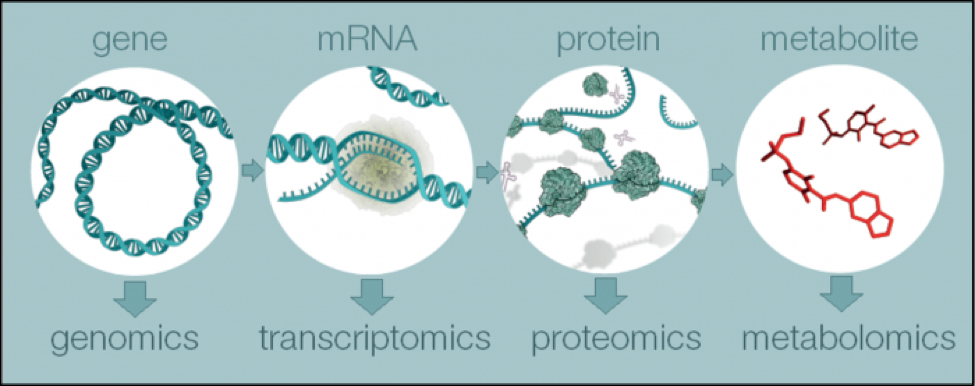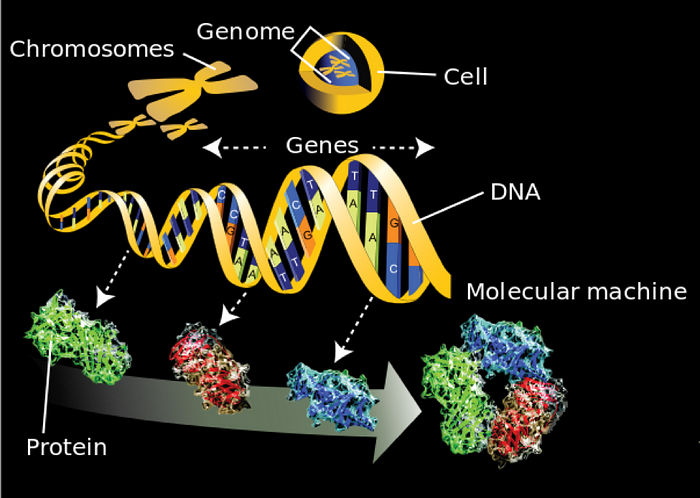Wellness/Healthcare 2.0
How Hormones Play a Role in Social Anxiety
Did you know that that hormones and anxiety are related in certain ways, such that your hormones may have a relation to how anxious yo...
What is metabolomics?

- Metabolomics is the large-scale study of small molecules, commonly known as metabolites, within cells, biofluids, tissues or organisms. Collectively, these small molecules and their interactions within a biological system are known as the metabolome.
An overview of the four major “omics” fields, from genomics to metabolomics.
- Just as genomics is the study of DNA and genetic information within a cell, and transcriptomics is the study of RNA and differences in mRNA expression; metabolomics is the study of substrates and products of metabolism, which are influenced by both genetic and environmental factors .
- Metabolomics is a powerful approach because metabolites and their concentrations, unlike other “omics” measures, directly reflect the underlying biochemical activity and state of cells / tissues. Thus metabolomics best represents the molecular phenotype.
What is Proteomics?
- Proteins are essential macromolecules found in cells. They are important for many physiological functions occurring in an organism. Almost all biochemical reactions are catalyzed by the proteins present in the cells. Genes are stored with genetic instructions to produce proteins. The genetic code is transformed into an amino acid sequence which determines a particular protein. This process is known gene expression. When required, genes are expressed and synthesized as proteins. The entire protein set of a cell is known as proteome. The study of the proteome of a cell is known as proteomics. The structures, characteristics, interactions and functions of proteins are studied under proteomics to investigate how proteins affect the cellular processes.
- Organisms contain thousands of different proteins which serve a variety of functions in the cells. Genomic studies provide key information to perform proteomic studies since genes encode for mRNA molecules and mRNA encode for proteins. Proteomics studies are important in many fields; this is especially useful in cancer biology, where it can be used to reveal abnormal proteins that lead to cancers.


- Epigenomics is the study of the epigenome, which is a multitude of chemical compounds that direct the functioning genome as a whole. These compounds bind to the DNA to activate or deactivate specific genes in the genome, thereby altering the way that it behaves. As a result, the epigenome may play a role in the regulation of protein production in some cells of the body.
Epigenomic compounds
- The process of epigenomic compounds binding to DNA and exerting their effect on its function is referred to as “marking” the genome. The presence of these marks does not affect the sequencing of DNA but alters the function of the DNA.
There are two types of marks of an epigenomic compound, which are:
- DNA methylation: methyl groups of proteins can attach to the bases of DNA at specific receptor sites to directly affect the DNA in a genome. The binding of the methyl group can switch the gene on or off and lead to a change in the way the DNA interacts with other proteins.
- Histone modification: proteins can attach to histone proteins, which usually exist within the genome because DNA wraps around them. This changes the way that other proteins in the area interact with the region of DNA, to affect the DNA in the genome indirectly.
The epigenomic compounds can be passed on from one cell to another during the cell replication process to mark the next generation of cells. This mean that they are heritable, but via cell meiosis and mitosis.
Changes to the epigenome
- In the human genome, there are two copies of each gene — one from each parent. Epigenomic compounds play a role in determining which gene is active at any one time. Imprinting is the pattern that naturally regulates which copy of the gene is active at any one time and can be altered by the epigenome
- Some health conditions are thought to be associated with a change in the imprinting of the genome. This includes conditions such Beckwith-Wiedemann syndrome, Prader-Willi syndrome and Angelman syndrome. Therefore, information that epigenomics can reveal about the nature of epigenomic imprinting and its effect on the human genome could be applied in medical practices i.e. diagnosis and treatment of these and related conditions. Some changes to the epigenome are also associated with an increased risk of cancer.
- It is possible for the epigenome to change throughout the lifetime of an individual. This adjustment can be a normal response to environmental exposures and be a feature of human adaptability, but it may also have the potential to cause disease. Some factors that may lead to changes in the epigenome to cause disease include smoking, diet and infections.
Research about the epigenome
- Researchers are currently attempting to map the locations and function of the various chemical marks of the epigenome, which can affect the function of DNA. Epigenomics is an important part of the research efforts to improve our understanding of human health and disease.
- It is a new field because it was only recently discovered that the surrounding chemical compounds can change the way the genome functions. In the past, the sequence of DNA has been the core of genomic research. In the future, it is hoped the epigenomic maps could provide information to health professionals about the health of an individual and aid in predicting their risk of developing certain health conditions or gauge their response to medical therapies.

